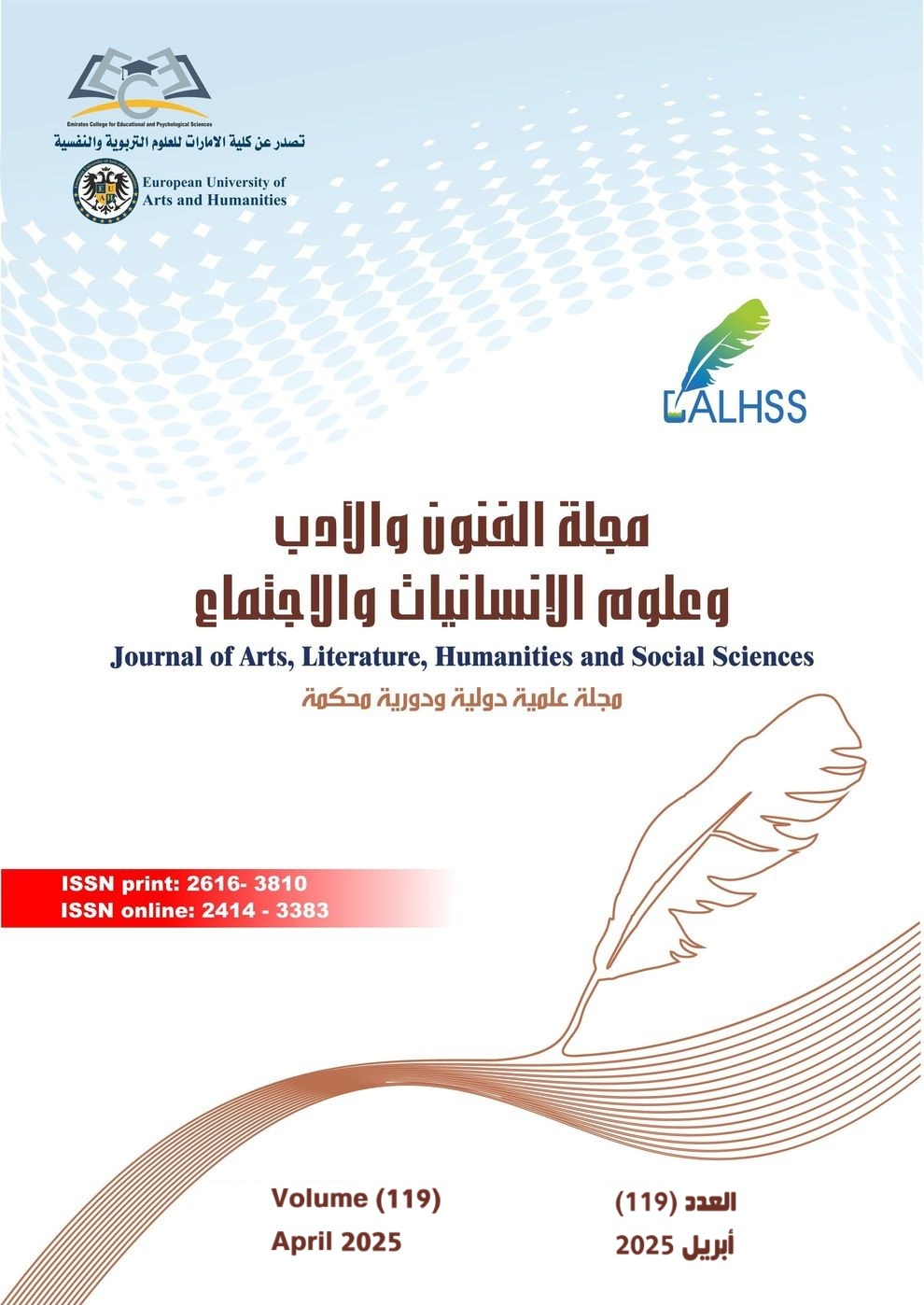Investigating the Strategies of Translating Neologisms in Science Magazines from English into Arabic
(A Translational Perspective)
الملخص
This study investigates the strategies used for translating neologisms from English into Arabic in the context of science magazines. It aims to analyze the frequency of each translation strategy to identify the most commonly applied methods in translating neologisms within this specific genre. The study draws on a model of translation strategies based on Vinay and Darbelnet (1995), Molina and Albir (2002), and Gottlieb (2005). The study uses descriptive and comparative methods and conducts a quantitative analysis of data collected from 10 issues of two science magazines: Scientific American and Nature, along with their Arabic versions. The findings reveal that in Nature, the most frequent strategy is calque, while borrowing appears the least frequent. In Scientific American, calque is also the most common strategy, while amplification is the least frequent one. These results highlight the predominance of calque in translating technical terms, while also indicating the increasing use of borrowing and description when exact equivalents are unavailable. This research may contribute to translation theory and practice, offering insights into how neologisms are handled across languages. Future studies could look into how digital media platforms affect the translation of scientific terms. The role of artificial intelligence in translating neologisms and its impact on translation strategies also warrants investigation. Tracking the evolution of scientific terminology would shed light on how new terms are adopted and integrated into the target language over time. Finaly, the findings in this study could be used by translators, publishers of science magazines, language and translation programs and translator trainers.
المراجع
2. Alharbi, A. (2017). Factors influencing the translator’s choice of foreignisation and domestication in translation into Arabic of neologisms and idioms in the Harry Potter series. Proceedings of the 9th International Conference on Languages, Humanities, Education and Social Sciences, UAE, 21-22. doi: 10.15242/HEAIG.H1217908
3. Al-Khury, S. (1988). Al-Tarjumah Qadeeman wa Hadeethan [Translation in the past and the present]. Akouda: Dar Al-Ma'arif Lil-Taba'ah wal-Nashr.
4. Avagyan, A. (2015). The translation of English neologisms. Retrieved from: http://termcoord.eu/2015/06/the-translation-of-english-neologisms
5. Awang, R., & Salman, G. (2017). Translation and Arabicization methods of English scientific and technical terms into Arabic. AWEJ for Translation & Literary Studies. 1(2), 92-106. doi: 10.24093/awejtls/vol1no2.8.
6. Bataina, M. (2021). Translating multi-word business terms from English into Arabic: A study of semantic loans. Journal of Alalama. 6(3), 137-153.
7. Cabre, M. T. (1999). Terminology: Theory, methods and applications (Vol. 1). Amsterdam: John Benjamins.
8. Delabastita, D. (2004) Literary style in translation: Archaisms and neologisms. In H. Kittel et al. (Ed.), Übersetzung, translation, traduction: . An International Encyclopedia of Translation Studies (2nded.) (pp. 883–888). Berlin & New York: Walter de Gruyter.
9. Elmgrab, R. A. (2011). Methods of creating and introducing new terms in Arabic. IPEDR-International Proceedings of Economics Development and Research, 26. 491-500. Retrieved from http://www.academia.edu/download/38168283/99-ICLLL_2011-L10163.pdf
10. Fumani, M. & Abdollahpour, S. (2017). Translation of neologisms in fishery-engineering based on Kurki’s (2012) framework: A strategy-based analysis. International Journal of English Language & Translation Studies. 5(2), 43-52.
11. Gottlieb, H. (2005). Anglicisms and translation. In G. Anderman & M. Rogers (Eds.), In and out of English: For better, for worse? (pp. 161-184). Toronto: Multilingual Matters.
12. Hanaqtah, M. (2019). Translation of political neologisms coined by politicians: Issues and strategies. Journal of Social Sciences. 8(1), 157-168. doi: 10.25255/jss.2019.8.1.157.168.
13. Houshyar, L. & Karimnia, A. (2013). An investigation into the strategies applied to Persian translations of the neologisms created in Persian Academy. Modern Journal of Language Teaching Methods. 3(4), 29-39.
14. Khassara, M. (1994). Al-Ta'areeb wa Al-Tanmiyah Al-Lughawiyah [Arabicization and Linguistic Development]. Damascus: Al-Ahali Lil-Taba'ah wal-Nashr wal-Tawzee.
15. Kurki, M. (2012). The Finnish subtitling of neologisms in the science fiction television series stargate SG-1. (Master’s thesis). Retrieved from https://helda.helsinki.fi/bitstream/handle/10138/33365/thefinni.pdf?sequence=1&isAllowed=y
16. Molina, L., & Albir, A. (2002). Translation techniques revisited: A dynamic and functionalist approach. Meta, 47(4), 498-512.
17. Newmark, P. (2003). A textbook of translation. Harlow: Pearson Education.
18. Niska, H. (1998). Explorations in translational creativity: Strategies for interpreting neologisms. Interpreting. 2(1). Retrieved from http://www.oocities.org/~tolk/lic/kreeng2.htm
19. Pavel, S. & Nolet, D. (2001). Handbook of Terminology. Canada: Minister of Public Works and Government Services.
20. Rey, A. (1995). Essays on terminology (Vol. 9). Amsterdam: John Benjamins.
21. Sager, J. C. (1997) Term Formation. In S. E. Wright, & G. Budin, (ed.). Handbook of terminology management. (pp. 25-41. (vol.1). Amsterdam: John Benjamins.
22. Vinay, J.-P., & Darbelnet, J. (1995). Comparative stylistics of French and English: A methodology for translation. Amsterdam: John Benjamins.
الحقوق الفكرية (c) 2025 Faris Ahmed Juwair

هذا العمل مرخص حسب الرخصة Creative Commons Attribution-ShareAlike 4.0 International License.



